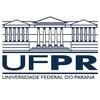Explore all the information on
Poultry nutrition - Other additives
Alternative feed additives have promising importance in broiler production due to the ban on the use of certain antibiotics. The most used antibiotic alternatives in broiler production are phytogenics, organic acids, prebiotics, probiotics, enzymes, and their derivatives. Antibiotic alternatives have been reported to increase feed intake, stimulate digestion, improve feed efficiency, increase growth performance, and reduce the incidence of diseases by modulating the intestinal microbiota and immune system, inhibiting pathogens, and improving intestinal integrity. Simply, the gut microbiota is the target to raise the health benefits and growth-promoting effects of feed additives on broilers. Therefore, naturally available feed additives are promising antibiotic alternatives for broilers.
1 Introduction The emergence of multi-resistant bacteria (MDR) to antibiotics represents one of the principal global threats to public health (Murray et al., 2022). The clinicians have been considered the use of the last therapeutics options, such as vancomycin, polymyxin B, carbapenems and colistin, with low rates of success (Wang et al., 2022; Yao et al., 2023). The infections by MDR are currently associated with considerable increase in morbidity and mortality of intensive...
Comments : 0
Recommendations: 1
1. Introduction Recently, the interest in “green food products” based on natural compounds and minimal processing of edible products [1,2] has gained attention in determining products’ acceptance [3]. These characteristics are crucial factors that reflect the current trends and economic growth in this sector [4], which is estimated to exceed USD 13 billion by 2024, according to reports from Global Market Insights, Inc. (Selbyville, DE, USA) [5]. From this point...
Comments : 0
Recommendations: 0


An impact of Deoxynivalenol produced by Fusarium graminearum on broiler chickens
Suggested link
INTRODUCTION Campylobacter jejuni (CJ) is a Gram-negative commensal pathogen prevalent in the intestinal tract of chickens and other animals. Human infection is characterized by inflammatory bowel response, followed by bloody diarrhea and painful symptoms to the affected people and pets. In addition, Guillain-Barre syndrome can be a secondary sequelae, characterized by a potential fatal autoimmune disorder in humans (Crofts et al., 2018). Moreover, CJ multidrug resistance to...
Comments : 0
Recommendations: 0
1. Introduction Antimicrobial resistance (AMR) is one of the main global threats today, and recent reports estimate that it directly caused 1.27 million deaths in 2019 [1]. In Brazil, the National Health Surveillance Agency, through the Evaluation of National Indicators of Health Care-Related Infections (HAIs) and Microbial Resistance (MR), in the year 2021, estimated that Escherichia coli resistance to different classes of beta-lactams can reach rates of 47.5% to cephalosporins,...
Comments : 0
Recommendations: 1
.jpg&w=3840&q=75)

Mycotoxin detection: VICAM builds a stronger and more sustainable future for food
Suggested link
Max-profit and stochastic approaches use production, market and nutrient variability data to formulate diets by more economically sustainable means; giving increased flexibility, opportunity and capacity for the Australian poultry industry to cope and thrive under market challenges (Moss et al. 2020; Sterling et al., 2005). However, in order for producers to accurately formulate diets using max-profit and stochastic techniques, it is likely that some data is presently lacking and there may...
Comments : 1
Recommendations: 2
One Health Mission For most of the 20 th century, society viewed veterinary medicine primarily as an animal health medical discipline. In recent years, highly publicized public health threats have helped many realize the fundamental linkages between veterinary medicine and human health. According to the World Health Organization (WHO), one or more new infectious diseases have emerged each year since the 1970s (WHO 2007). The majority of these have been zoonoses,...
Comments : 2
Recommendations: 5
1. Introduction Campylobacter is a virulent Gram-negative bacterial genus mainly found in the intestines of poultry [1], dogs, and cats [2]. These pathogens can cause bloody diarrhea, abdominal cramps, nausea, and vomiting. In more complex cases, they can cause Guillain–Barré syndrome and death [3]. Since its first recognition, several pathogenic species of Campylobacter that cause human campylobacteriosis have been cataloged using phylogenetic tools...
Comments : 0
Recommendations: 2
1. Introduction In intensive broiler production, the objective is to obtain high-performance productivity at a low cost. To accomplish production goals and satisfy the increased demand for poultry meat worldwide, intense genetic selection, health, management, and nutrition programs have emerged (Peralta et al., 2016). As a major development priority for nutrition, researchers are looking for natural additives to replace antibiotic growth promoters (AGPs). The AGPs were banned since...
Comments : 0
Recommendations: 1


Life Cycle Assessment (LCA) Feed Solutions Increase Sustainability
Suggested link
The demand for functional foods has surged in recent decades and is projected to continue growing due to their potential to mitigate the risk of certain diseases. Eggs, recognized for their excellent nutritional value and health benefits, fall into this category. The widespread production and consumption...
Comments : 0
Recommendations: 1
Viral diseases that affect the respiratory system of poultry, such as Avian Infectious Bronchitis (IBV), Newcastle Disease (ND), and Avian Influenza (IFV), have a significant and detrimental impact on the health of the animals. This, in turn, has negative consequences for the profitability of poultry producers. To control these types of diseases, the poultry industry has primarily relied on strengthening biosecurity plans, along with the implementation of various vaccination strategies....
Comments : 0
Recommendations: 0
Louisville, KY – The Poultry Science Association (PSA), the leading international professional scientific society dedicated to poultry, was excited to host an evening of recognition and honored many outstanding achievements and contributions to the field of poultry science.
During his...
Comments : 0
Recommendations: 1
Ioannis Mavromichalis, a Ph.D. consultant in the animal nutrition industry, mentioned in Feed Strategy, "In my experience, feed prices always fluctuate. When they rise, the most effective way to maintain profitability is by enhancing the feed conversion ratio, or FCR." The Feed Conversion Ratio (FCR) is crucial in livestock farming as it significantly affects the cost per kilogram of meat. Feed costs can account for 40% to 70% of total production expenses, varying by country and type...
Comments : 3
Recommendations: 0
.jpg&w=3840&q=75)

(Mandarin) Strengthening Pellets for Better Feed Performance
Suggested link
The WVEPAH training program is designed for veterinarians and poultry professionals who wish to consolidate and refine their knowledge in areas such as pathology, nutrition, biosecurity, and epidemiology, among others. We are pleased to announce our upcoming course:
Module II: Commercial Layers at the prestigious Universidad Nacional...
Comments : 0
Recommendations: 2
Elizabeth Santin (Independent Consultant) comments on the different causes of oxidative stress, the impact on immunity, and the antioxidants that can be administered, in this Engormix interview....
Comments : 2
Recommendations: 8
I. INTRODUCTION The increased recognition of antimicrobial resistance as a public health risk and, therefore, the imposed restrictions on the use of antimicrobial growth promoters (AGP), has driven the search for novel nutritional strategies for broiler chickens. The advances in molecular biology, analytics, and data science in the past years have enhanced our understating of the gastrointestinal tract (GIT) microbiome of chickens (Oakley et al., 2014; Sun et al., 2021). These novel...
Comments : 0
Recommendations: 1
I. INTRODUCTION The product tested is a purified yeast fraction which is highly concentrated in β-1.3/1.6 glucans (BG). β-1.3/1.6 glucans stimulate the immune system by triggering the Dectin-1 receptors located on the surface of phagocytes, stimulating a release of cytokines. Cytokines induce different immune pathways causing an immune response. When phagocytes that have previously been exposed to β-1.3/1.6 glucans, their immune responses toa pathogen is faster and...
Comments : 0
Recommendations: 3
Thermal stress happens when the animal leaves its thermal comfort zone, it means neither too cold nor too hot, let's say it feels good. In both of the cases, the stress due to heat and cold, the problem itself is not the temperature alone, but its relation to relative humidity level. The...
Comments : 8
Recommendations: 4
Tri-butyrin is regarded as an ideal molecule to supply both butyrate and mono-butyrin to the small intestine (SI) to maintain intestinal function, modulate the immune response and improve broiler growth performance (Moquet et al., 2016; Moquet et al., 2018). Valerins have been shown to positively affect the morphology of the SI mucosa and reduce the incidence of necrotic enteritis (Onrust et al., 2018). To date, little information is available as to the extent to which valerin and butyrin in...
Comments : 0
Recommendations: 0


An impact of Deoxynivalenol produced by Fusarium graminearum on broiler chickens
Suggested link
In recent years, the egg industry is aiming to prolong the life cycle of laying hens, both for reasons of profitability and for sustainability. However, the goal to produce 500 eggs in a 100-week cycle is hindered by the declining performance of older hens. It is hypothesised that nutritional strategies can be implemented to support the health of these animals, thereby improving laying persistency. The objective of this trial was to investigate the effects of two sources of butyrate...
Comments : 0
Recommendations: 0
Usage of nutritional emulsifiers in animal feed offers a valid strategy to improve energy, fat and protein digestibility. There are numerous nutritional emulsifiers currently on the market containing a range of active ingredients. Most emulsifiers contain phospholipids or lysophospholipids (LPL), present in lecithin or lysolecithin. An alternative active ingredient is glyceryl polyethylene glycol ricinolate (GPGR). It is important to know the hydrophiliclipophilic balance (HLB) value of...
Comments : 0
Recommendations: 0











.jpg&w=3840&q=75)










